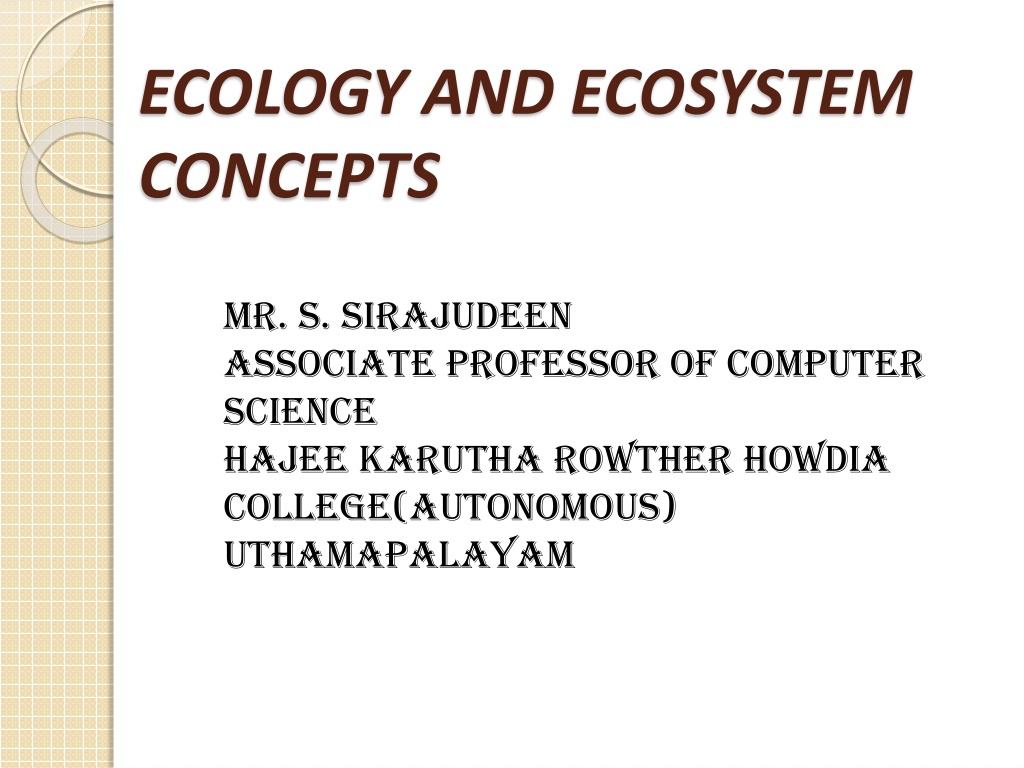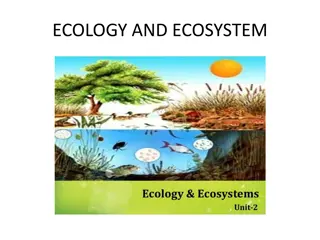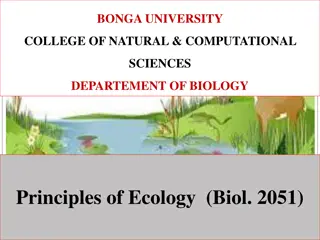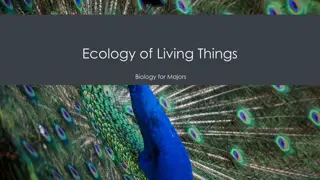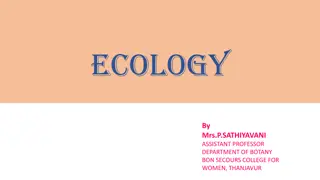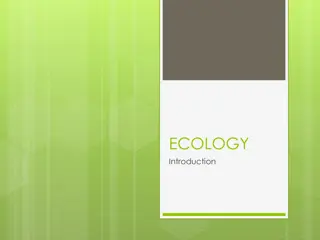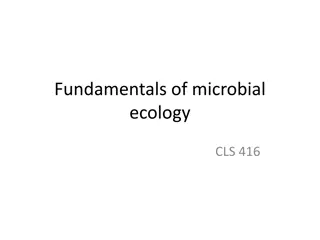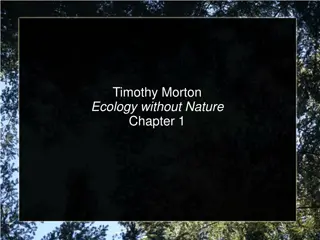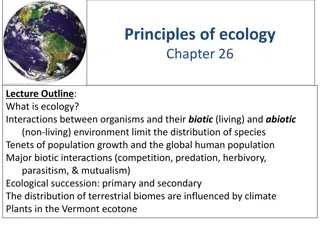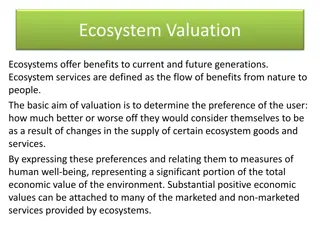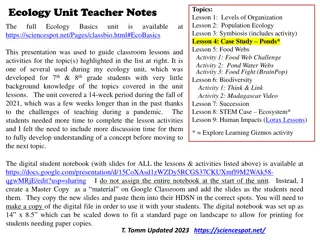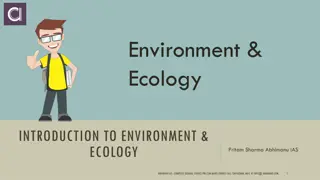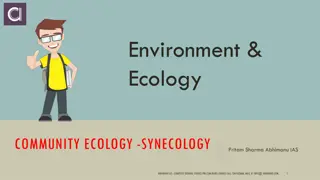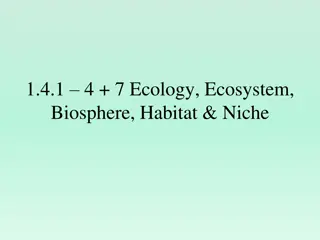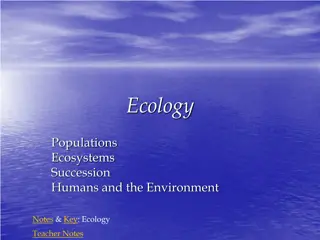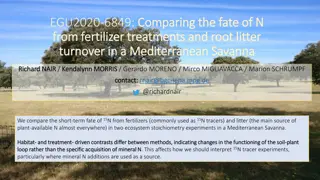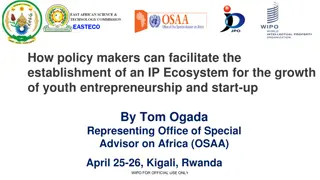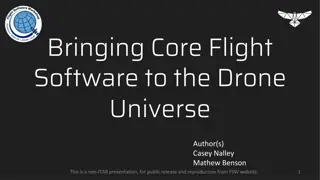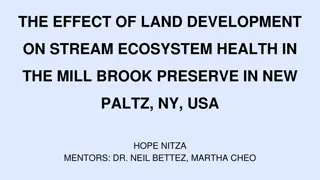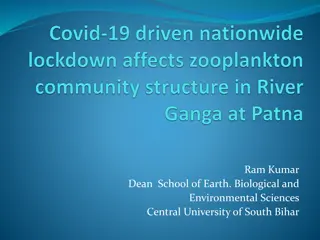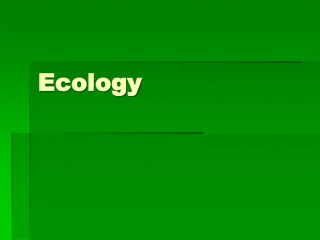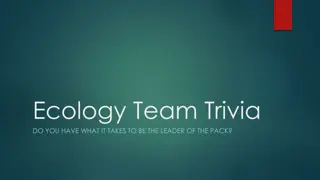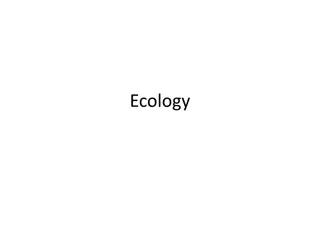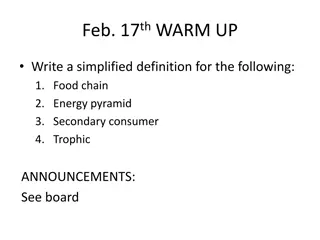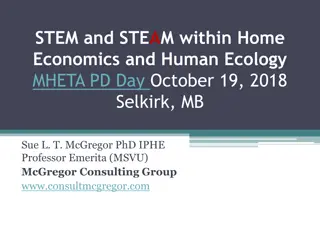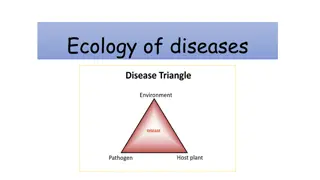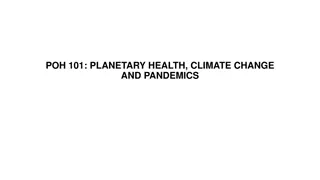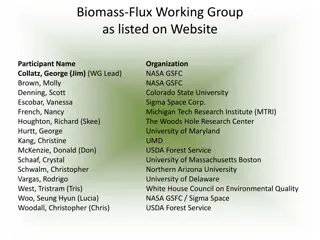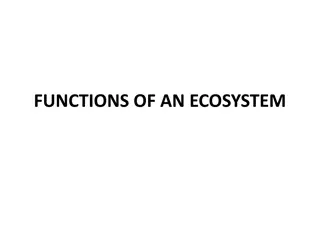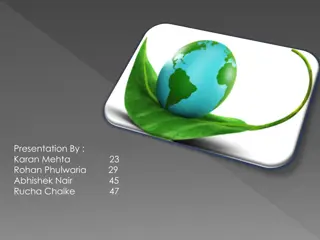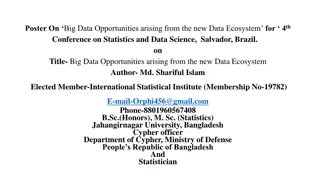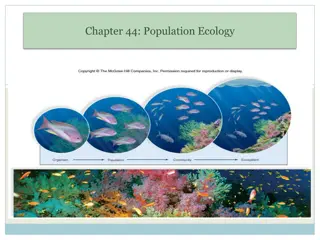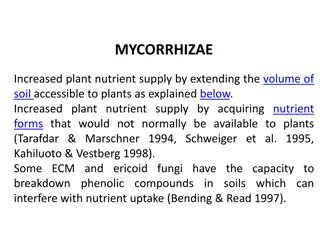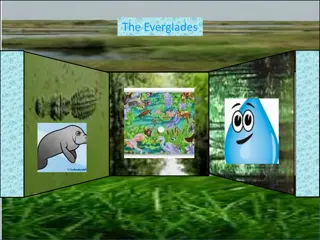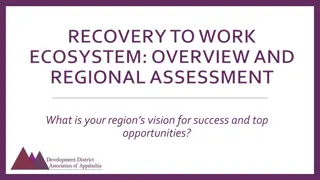Ecology and Ecosystem Concepts: Understanding Interrelationships in Nature
Ecology explores the interconnections between living organisms and their environment, dating back to zoologist Geoffroy St. Hilaire's early proposal in 1859. The term "ecology" originates from the Greek words for house and discourse, emphasizing the study of organisms within their habitat. Ecosystems, coined by A.G. Tansley in 1935, encompass both biotic and abiotic factors, highlighting the intricate relationship between organisms and their surroundings. These interdependent systems rely on the interaction of living and non-living components for sustaining life and maintaining ecological balance.
Download Presentation

Please find below an Image/Link to download the presentation.
The content on the website is provided AS IS for your information and personal use only. It may not be sold, licensed, or shared on other websites without obtaining consent from the author. Download presentation by click this link. If you encounter any issues during the download, it is possible that the publisher has removed the file from their server.
E N D
Presentation Transcript
ECOLOGY AND ECOSYSTEM CONCEPTS Mr. S. Sirajudeen Associate Professor of Computer Science Hajee Karutha Rowther Howdia College(Autonomous) Uthamapalayam
Ecology deals with the study of interrelationships existing between the living organisms in relation to their environment. early in 1859 Geoffroy St.Hilaire, zoologist proposed the term ethology for the study of organisms in relation to the environment. Henry thereau (1869), used the word ecology in his letters, but did not define it.
The term Ecology is derived from the Greek word Oikos which means house and logos means discourse or study .so it is simply defined as study of organisms in relation to their habit and habitats. Ernst Haekel in 1869, defined ecology as the total relations of the animal to its organic and inorganic environment . Eugene P.Odum (1963) defined ecology as the study of structure and function of nature .
Ecosystem The ecosystem is an ecological unit consisting of both the biotic (living) and abiotic (non-living) factors of the environment. the organism and the environment are inseparable inter- related and are interactive in their nature. The word ecosystem was first coined by A.G.Tansley in 1935.an ecosystem is a basic functional ecological unit.
The living and non-living factors of an ecosystem interact and exchange the materials. According to Odum an ecosystem is the basic fundamental unit of ecology which includes both the living and non-living environment, each influence the properties of the other and each is necessary for the maintenance of life. structure of an ecosystem: The structure of an ecosystem consists of abiotic and biotic components.
Abiotic components: The physico-chemical factors constitute the abiotic components or non-living inorganic substances. Abiotic components are water, carbon dioxide, oxygen, nitrogen, calcium, phosphorus, sunlight etc. These abiotic substances are necessary for the normal metabolism and growth of all organisms. when any one of these abiotic components is removed or altered there will be an upset in the ecosystem and the whole ecosystem may be affected in due course of time.
Biotic components: The living organisms constitute the biotic components of the ecosystem. They may be classified into the following: Producers or Autotrophs: They are capable of synthesizing their own organic food from the simple inorganic or organic substances in any ecosystem , the producers are chlorophyll bearing photosynthetic organisms. They convert the solar radiant energy into chemical energy and synthesize carbohydrates.
Examples: The microscopic plants and the rooted or floating plants in ponds and lakes, the algae in the ocean, the grasses in the grass lands and trees in the forests are the producers in their respective ecosystems. Consumers: Consumers are the living members (animals) of the ecosystem which consume the food produced by the producers. The consumers are classified as primary, secondary and tertiary consumers.
Primary Consumer: The herbivores are the animals (that eat only plants). They depend upon the plants (producers) for their food and survival and they are the primary consumers in an ecosystem. Examples: A deer is a primary consumer in a forest while the bison is one on a prairie. The protozoans, crustaceans and mollusks which feed on the floating algae found in pond and sea are primary consumers.
Insects, rodents(rat) and ruminants (cow, goat) are the primary consumers on the terrestrial environment. The entire life of an ecosystem revolves around the presence of these herbivores (plant eaters) and hence Eltoncalled them as Key industry animals . Secondary consumer: The secondary consumers feed on the primary consumers (herbivores). Since the primary and secondary consumers are animals, the secondary consumers are also called as carnivores.
The animals which eat meat. The secondary consumers are the first level of animals feeding on other animals and therefore they are also called as primary carnivores. Examples: A herbivorous rabbit (primary consumer) forms the food of carnivorous wolves (secondary consumers). The herbivorous rat forms the food of the carnivorous snakes and birds. Insects form the food of frogs. The frogs are the primary carnivores . Cow and goat form the food for the lion and tiger.
Tertiary consumer: The secondary consumers are killed and fed by tertiary consumers. The tertiary consumers are the second level of animals feeding on other animals and are therefore called as secondary carnivores. Examples: wolf in the forest environment form the food for tertiary consumer lion. Frog in the pond forms the food for snakes. Fish in the pond forms the food for birds as well as man.
Decomposer: Decomposers are also living components of ecosystem and are largely composed of micro-organisms such as bacteria and fungi. These micro-organisms act on the dead bodies of producers and consumers and decompose them. As a result the complex organic materials (animal s dead bodies) are converted into simple inorganic soluble food substances.
These inorganic substances in the environment are consumed by the producers. Since the micro-organisms transform the dead complex organic substances into simple inorganic substances. These micro organisms (bacteria and fungi) are sometime called as transformers because they transform the organic into inorganic substances.
Functions and ecosystem: The abiotic and biotic components of the ecosystem are interacting system and linked by energy, nutrients and minerals. The energy, nutrients and minerals are circulated and recycled between the abiotic components. The survival of the living (biotic) components depends on the flow of energy and the circulation of nutrients and minerals in the ecosystem. The following are the functions of the ecosystem:
Energy: Energy flow Food chain Food web Trophic levels Bio-geo chemical cycles
Energy: work. The main source of energy for an ecosystem is the light energy from sunlight. Plants utilize only 0.02% of the light energy reaching the earth. Plants convert this light energy into chemical energy sugar or carbohydrate by the process photosynthesis. The synthesized sugar is utilized by plants for various purposes like metabolism and growth and the remaining energy is converted into starch and stored Energy is the ability to part effort to do
Energy flow or energy cycle: The energy cycle is the flow of energy among the various plants and animals of an ecosystem. The energy from sunlight is converted by plants themselves into growing new plant materials such as leaves, flowers, fruits, branches, trunks and roots. Since plants can grow by converting the sun s energy directly into their tissues, they are known as producers. The plants are used by herbivores as food, which gives them energy.
A large part of this energy is used up for the metabolic functions of these animals, such as breathing, digesting food, supporting growth of tissues, maintaining blood flow and body temperature. Energy is also used for activities such as searching of food, finding shelter, breeding and reading the young ones. The carnivores depend on the herbivores for their food and energy. Thus the producers, herbivores and carnivores depend on each other for food and energy. Therefore the energy which is transferred from one level to another level is called energy flow
Food chain: o source (plants) through a series of organisms, by eating and being eaten, constitutes food chain. o Thus different plant and animal species are linked to one another through food is called food chain. o Each food chain has three or four links The transfer of energy from the
Example: A typical food chain can be seen in a forest ecosystem. Green plants are eaten by deer or goat. The deer or goat is eaten by lion. Plants deer/goat lion In grass land ecosystem grass is eaten by grasshoppers. The grasshoppers are eaten by lizards and in turn the lizards are eaten by hawk. Grass grasshopper lizard hawk Examples of food chains from various ecosystems.
Pond system: The algae and phytoplankton are eaten by the zooplankton. Zooplanktons are eaten by small fishes and they in turn are eaten by large fishes Algae and phytoplankton Zooplankton small fish large fish
Marine ecosystem: In the Marine ecosystem, algae and phytoplankton are eaten by zooplankton. Zooplankton are eaten by small fishes. Then the small fishes are eaten by large fish.
Grass land ecosystem: Grasses are eaten by grass hopper, the grass hoppers are eaten by lizards and the lizards are eaten by hawk. Grasses are also eaten by goat and the goat is eaten by fox. Grass grasshopper lizard hawk Plants goat fox
Forest ecosystem: Plants are eaten by deer, rabbit and bison, deer is eaten by lion and tiger, rabbit is eaten by fox and wolf, bison is eaten by lion and tiger. deer lion and tiger Plants rabbit fox and wolf bison lion and tiger
Food web: The food chains are not independent. The organism of one chain may obtain food from more than one chain. Thus various food chains are inter connected with each other. This interlocking of many food chains is called food web. Each step of a food web is called a tropic level. (If the links in the food web are distributed due to human activities that lead to the loss or extinction of species, then the food web breaks down.) Example: Food web in a grass land ecosystem.
In a grass land ecosystem, grasses are predominant. In one chain, grasses are eaten by grass hoppers; grass hopper is eaten by lizard which is eaten by hawk. In another chain rabbit is eaten by hawk. In the third chain mouse is eaten by snake which is eaten by hawk. In the fourth and fifth chain hawk directly eats grass hopper and mouse. Thus there are five food chains which are inter connected to from a food web.
